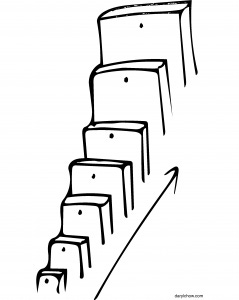The Domino Effect
Updates by Daryl Chow, MA, Ph.D.(Psych)
View this email in your browser
The Domino Effect
By Daryl Chow, MA, PhD on May 21, 2019 10:39 am
A domino can knock over another domino about 1.5x larger than itself. A regular domino fall is a linear progression, whereas in a geometric profession, as described by physicist Lorne Whitehead “a very small amount of input energy can be amplified quickly to knock down an impressively big domino.” [1]
The implications are astounding. Take for example, in August 2009, Stefan Schöppers broke the world record for the largest toppling of dominos (see video below, or click here)
(See this other video for further explanation on geometric progression)
Closer to home, geometric progression has significant implications in the realm of psychotherapy. One of the critical pieces is to rethink how we place our first domino piece, the first session. “Don’t study the end result. Study the first step,” says Josh Shipp. Once we begin to undo the intake model, we can begin to focus more on what we can give, right from the first session, and less on what we take in our clinical assessment. (I’ve seen practitioners achieving this geometric progression when they begin first by examining their baseline data, and then working to improve their first sessions.)
Good outcomes is sequential, not simultaneous. The process of engagement starts out linear by becomes geometric.
For ways to ignite your first sessions, check out the Book, The First Kiss [Amazon in ebook/paperback, or if you want to read on other ebook devices other than kindle, go here.
Footnote:
[1] Lorne Whitehead, American Journal of Physics, Vol. 51, page 182 (1983). I first learned about Whitehead’s work in Gary Keller and Jay Papasan’s book, The One Thing.
The post The Domino Effect appeared first on Frontiers of Psychotherapist Development.
Recent Articles:
9 Distinctions of Burn Out
Think Like an Oak Tree
Is Less Really More?
Here’s the Payoff
Personal Learnings: Looking Back In Order To Move Forward (Part II of II)






